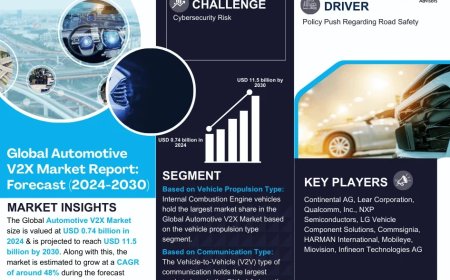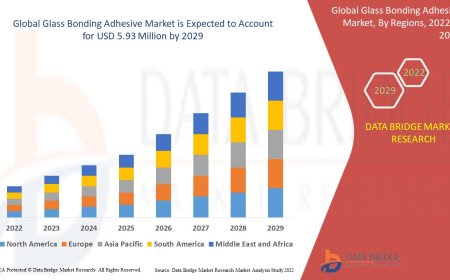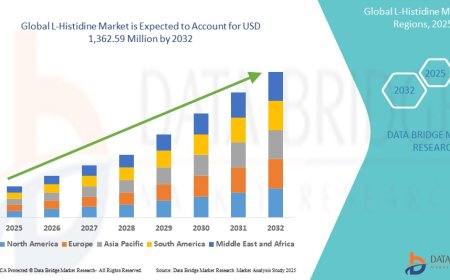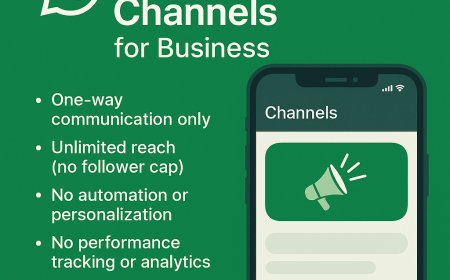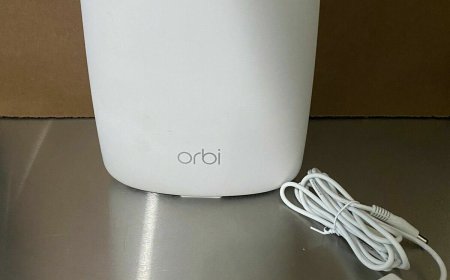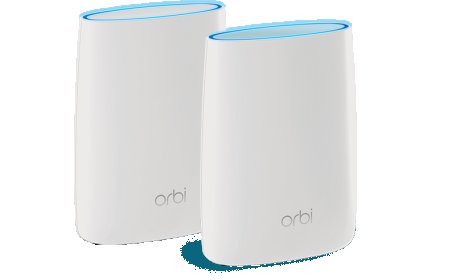How a Mobile App Development Company Ensures Seamless User Experience?
Discover how a mobile app development company ensures a seamless user experience through intuitive design, performance optimization, and continuous testing.

In the digital age, a mobile apps success largely depends on the experience it offers to users. A seamless user experience (UX) makes the difference between an app that customers love and one they quickly abandon. For businesses aiming to connect with their audience and build lasting relationships, providing a smooth and enjoyable app experience is crucial. Mobile app development companies specialize in creating apps that are not just functional but also intuitive, fast, and engaging. This blog explores how a mobile app development company ensures a seamless user experience and why it matters for business growth.
Understanding What Seamless User Experience Means
User experience refers to how a person feels when interacting with an app. It covers everything from the apps look and layout to how easy it is to navigate and complete tasks. A seamless UX means the app works smoothly without frustrating the user, no matter what device they use or where they are.
A good user experience is natural and effortless. Users should find what they need quickly, enjoy the visual design, and trust that the app will perform consistently. When the experience is seamless, users are more likely to return, recommend the app, and engage deeply with the business.
Why Seamless User Experience Is Important
Boosting User Retention and Engagement
Apps with confusing interfaces or slow performance drive users away. On the other hand, a seamless UX keeps users engaged for longer periods and encourages frequent use. Happy users are more likely to explore features, make purchases, and share the app with friends.
Building Brand Loyalty
An app that consistently provides a great experience reflects well on the brand. It builds trust and loyalty, making customers feel valued and understood. This emotional connection leads to long-term relationships and positive word-of-mouth marketing.
Reducing Support Costs
If users can easily navigate the app and find what they need, they are less likely to encounter issues or need support. This reduces the cost and effort required to handle complaints or troubleshoot problems.
Gaining Competitive Advantage
With millions of apps available, businesses need to stand out. A seamless UX is a strong differentiator that sets an app apart from competitors and helps it gain and retain a loyal user base.
How a Mobile App Development Company Creates Seamless UX
Research and Understanding User Needs
The first step in building a smooth app experience is understanding who the users are and what they want. Development companies conduct user research through surveys, interviews, and data analysis to identify user goals, preferences, and pain points.
This insight helps tailor the app design and features to fit real user needs rather than assumptions. Understanding the target audience guides every decision from navigation structure to visual elements.
Clear and Simple Design
A cluttered or complex interface confuses users and disrupts the flow. Mobile app companies focus on clean, minimalistic designs that highlight important features and reduce distractions.
They use simple layouts, consistent icons, and readable fonts to make the app easy to scan and interact with. Clear calls-to-action guide users smoothly through tasks.
Intuitive Navigation
Users should never feel lost inside an app. Development teams create straightforward navigation systems, such as clear menus, tabs, and search options, so users can move quickly between sections.
Good navigation anticipates what users want to do next and provides shortcuts or suggestions. For example, recently viewed items or quick access to frequently used features enhance the experience.
Fast Load Times and Performance
Speed is a major factor in user satisfaction. Apps that lag or freeze cause frustration and abandonment. Mobile app development companies optimize performance by writing efficient code, compressing images, and using fast servers.
They also test the app under various network conditions to ensure smooth operation even with slower connections. Reducing load times keeps users engaged and reduces bounce rates.
Responsive and Adaptive Design
Users access apps from different devices with varying screen sizes and resolutions. Development companies design apps that respond to these differences, adjusting layouts and elements accordingly.
Whether a user opens the app on a phone, tablet, or a large screen, the app should look great and function properly. Responsive design is key to a seamless experience across platforms.
Personalization and User Preferences
Modern apps personalize experiences based on user behavior and preferences. Mobile app companies integrate features like personalized recommendations, saved settings, and customized content feeds.
Personalization makes users feel valued and understood, encouraging them to spend more time in the app and explore new features.
Accessibility Features
Ensuring the app is usable by people with disabilities is not just a moral responsibility but also expands the user base. Companies include features such as voice commands, adjustable font sizes, high contrast modes, and screen reader compatibility.
Accessible design improves overall usability and contributes to a seamless experience for all users.
Thorough Testing and Quality Assurance
Before launch, the app undergoes extensive testing to catch bugs, crashes, and usability issues. Mobile app development companies perform functional testing, performance testing, and user acceptance testing to ensure the app meets quality standards.
They test on different devices, operating systems, and user scenarios to identify potential problems. Continuous testing throughout development helps maintain a smooth user experience.
Incorporating User Feedback
A seamless user experience evolves over time. Development companies collect user feedback through reviews, surveys, and analytics. This real-world data highlights pain points and opportunities for improvement.
Based on feedback, developers release updates to fix issues, add requested features, and enhance the apps usability. This cycle of listening and improving helps keep the app relevant and user-friendly.
Providing Ongoing Support and Maintenance
User experience doesnt end at launch. Mobile app development companies offer ongoing support to address technical problems and maintain app performance.
Regular updates ensure compatibility with new devices and OS versions, while proactive maintenance prevents issues before they affect users. Continuous care is vital for long-term seamless UX.
Technologies That Help Ensure Seamless User Experience
UI/UX Design Tools
Design tools like Sketch, Figma, and Adobe XD allow developers and designers to create detailed wireframes and prototypes. These tools enable early visualization and testing of the apps flow and design, reducing errors before coding starts.
Performance Monitoring Platforms
Services like Firebase Performance Monitoring and New Relic help track app speed, crashes, and errors in real-time. This data guides developers in quickly fixing issues that impact user experience.
Analytics and User Behavior Tracking
Analytics tools such as Google Analytics and Mixpanel provide insights into how users interact with the app. Understanding which features are popular or where users drop off helps optimize the app for better engagement.
Automated Testing Frameworks
Automated testing with tools like Appium and Selenium speeds up testing cycles and ensures consistent quality checks. This leads to faster releases and fewer bugs.
Read more: How a Mobile App Development Services Provider Ensures App Security and Quality?
The Business Impact of Seamless User Experience
Increased Customer Satisfaction
Apps that are easy to use and reliable create happier customers. Positive experiences lead to higher ratings and better reviews, attracting more users.
Higher Conversion Rates
Whether the apps goal is sales, subscriptions, or sign-ups, a smooth UX helps users complete actions without frustration, boosting conversions and revenue.
Lower Customer Churn
A seamless experience reduces the chances of users abandoning the app. Retaining users longer improves lifetime value and reduces marketing costs.
Enhanced Brand Reputation
A high-quality app reflects well on the brands professionalism and commitment to customers. It helps build a trustworthy and credible image.
Conclusion
A seamless user experience is at the heart of any successful mobile app. Mobile app development companies play a critical role in crafting this experience by combining research, smart design, technical expertise, and ongoing support. They focus on understanding the user, simplifying navigation, optimizing performance, and continuously improving the app based on real feedback.
Creating an app that feels natural and effortless requires attention to every detail, from the visual layout to the speed of loading screens. It also means making the app accessible and personalized, ensuring that every user feels valued.
For businesses, investing in professional mobile app development is not just about building an app; its about creating a tool that connects with users deeply and drives engagement, loyalty, and growth. When done right, the app becomes a vital extension of the brand and a powerful channel for customer interaction.
Partnering with a reliable clone app development company can also speed up this process, providing a ready-made structure that can be customized to deliver a seamless and high-quality user experience. The focus remains on meeting user expectations while supporting business goals, ultimately ensuring success in a competitive market.
FAQs
What are the key elements of a seamless user experience in a mobile app?
Clear design, intuitive navigation, fast performance, personalization, and accessibility are all essential for a seamless user experience.
How does user research contribute to better app design?
User research helps developers understand the needs, preferences, and pain points of the target audience, allowing them to create an app that truly serves its users.
Why is app performance critical for user experience?
Slow or crashing apps frustrate users and lead to uninstalls. Fast, reliable performance keeps users engaged and satisfied.
Can personalization improve user engagement?
Yes, personalized recommendations and settings make users feel valued and encourage them to spend more time using the app.
How important is post-launch support for maintaining user experience?
Ongoing support and updates fix bugs, introduce improvements, and ensure compatibility, which are crucial for maintaining a seamless experience over time.











